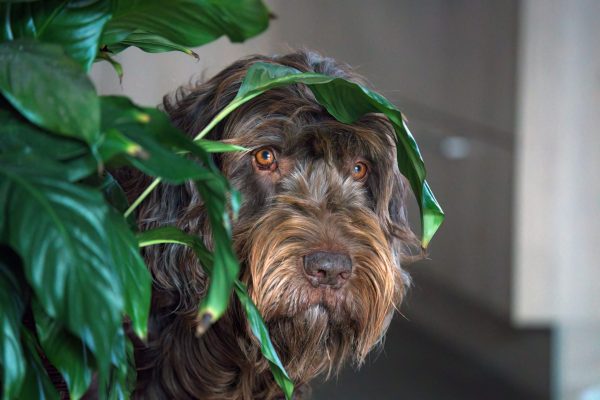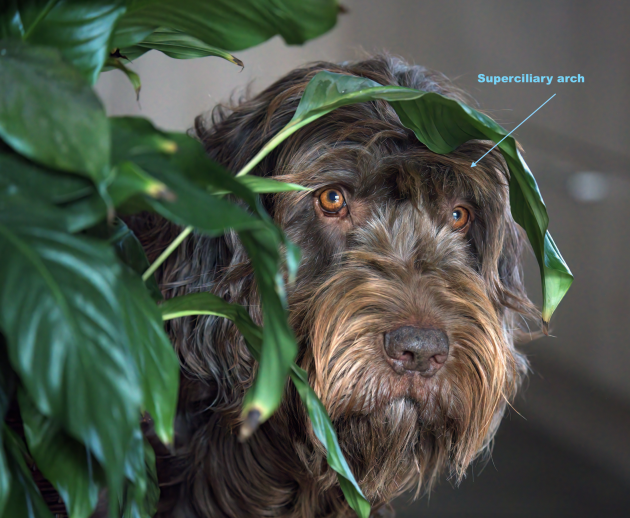
We confess a weakness for old breed standards because they didn’t hold back in describing their breeds.
There were fewer breeds to judge at a dog show back then, and far fewer breed standards for judges to learn. As of 2023, there are some 200+ AKC recognized breeds, so it’s understandable, if not logical, to standardize standards to make them more quickly absorbed. Just ask a veteran of the fancy with a herding or working breed how long it took to get through Working Group before the Herding Group was created in 1983.
That conceded, we still appreciate the phrases and terms used in those old standards that today might be regarded as floral (read: superfluous).Some terms, however, do remain because they are important to describing the aspect of a breed even if some readers don’t fully understand them. We came across such a term just this morning. It is “superciliary ridge.”
You’d have to be a student of Latin to recognize the word, superciliary, as a derivative of the word, “supercilium” which is an adjective having to do with the eyebrow, and without the word in some standards, the facial features of those breeds would be misunderstood.
We offer a layman’s primer: The superciliary ridge or arch is also known as the brow ridge or eyebrow ridge. It’s a bony ridge located above the eyes on the skull of some breeds, its size and prominence depending on the breed and individual dog. In some breeds, it’s what contributes to type, and can be what makes a dog look more serious or intense.
As for its purpose, the ridge serves to protect the eyes, as well as provide attachment points for the muscles that control the movement of the eyebrows and eyelids.

Not all breed standards mention it. As of this writing, you won’t find the word, “superciliary”in a herding breed. Nor in a Sporting, Terrier, or Toy breed. Where you will find it is in the standards of the breeds below:
Azawakh: The width of the skull is 40 percent the length of the head. The superciliary arches and the frontal furrow are slightly marked;
Peruvian Inca Orchid: The superciliary arches are moderately developed;
Norrbottenspets: The superciliary arches are well marked;
Coton de Tulear: The superciliary arches are only slightly developed;
Mastiff: Brows (superciliary ridges) moderately raised;
You will also find the word in many FSS breeds, and while it may or may not point to a prominent Superciliary arch, the word is included in the standard. Those breeds are the Slovakian Hound, French Pointing Dog, Wirehaired Slovakian Pointer, Croatian Shepherd Dog, Caucasian Shepherd Dog, Lapponian Herding, Rafeiro do Alentejo, Transylvanian Scent Hound, Bavarian Mountain Scenthound, Short-Haired Segugio, Karelian Bear Dog, Basset Fauve de Bretagne, Porcelaine, Hannoverscher Schweisshund, Portuguese Sheepdog, French Spaniel, Portuguese Pointing Dog, Estrela Mountain Dog, Slovenský Ćuvać, Italian rough-haired Segugio, Schapendoes, Bohemian Shepherd Dog, and the breed that took us down this rabbit hole, the Pudelpointer.
Image of Pudelpointer by Chamois huntress/Adobe Stock Photo
